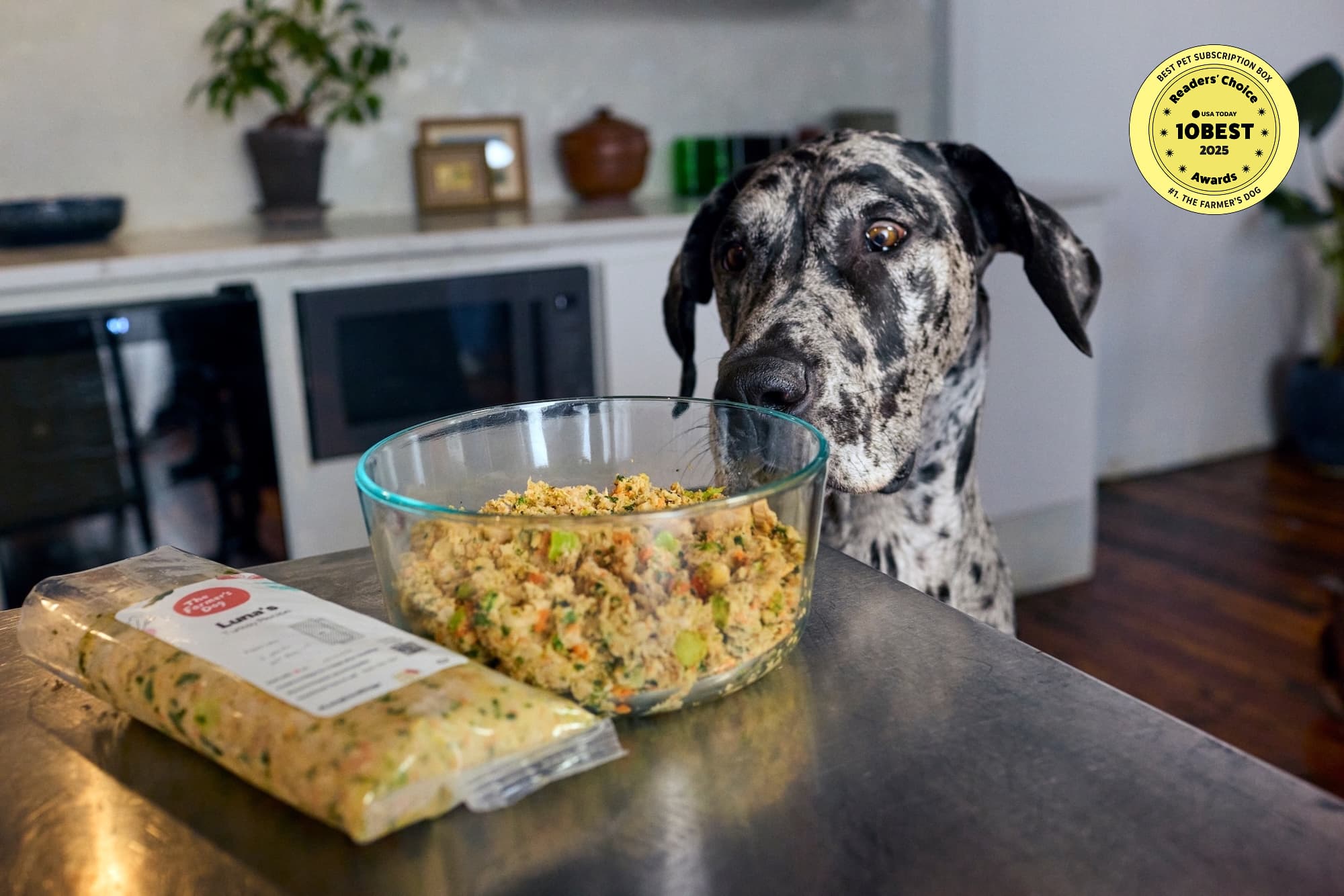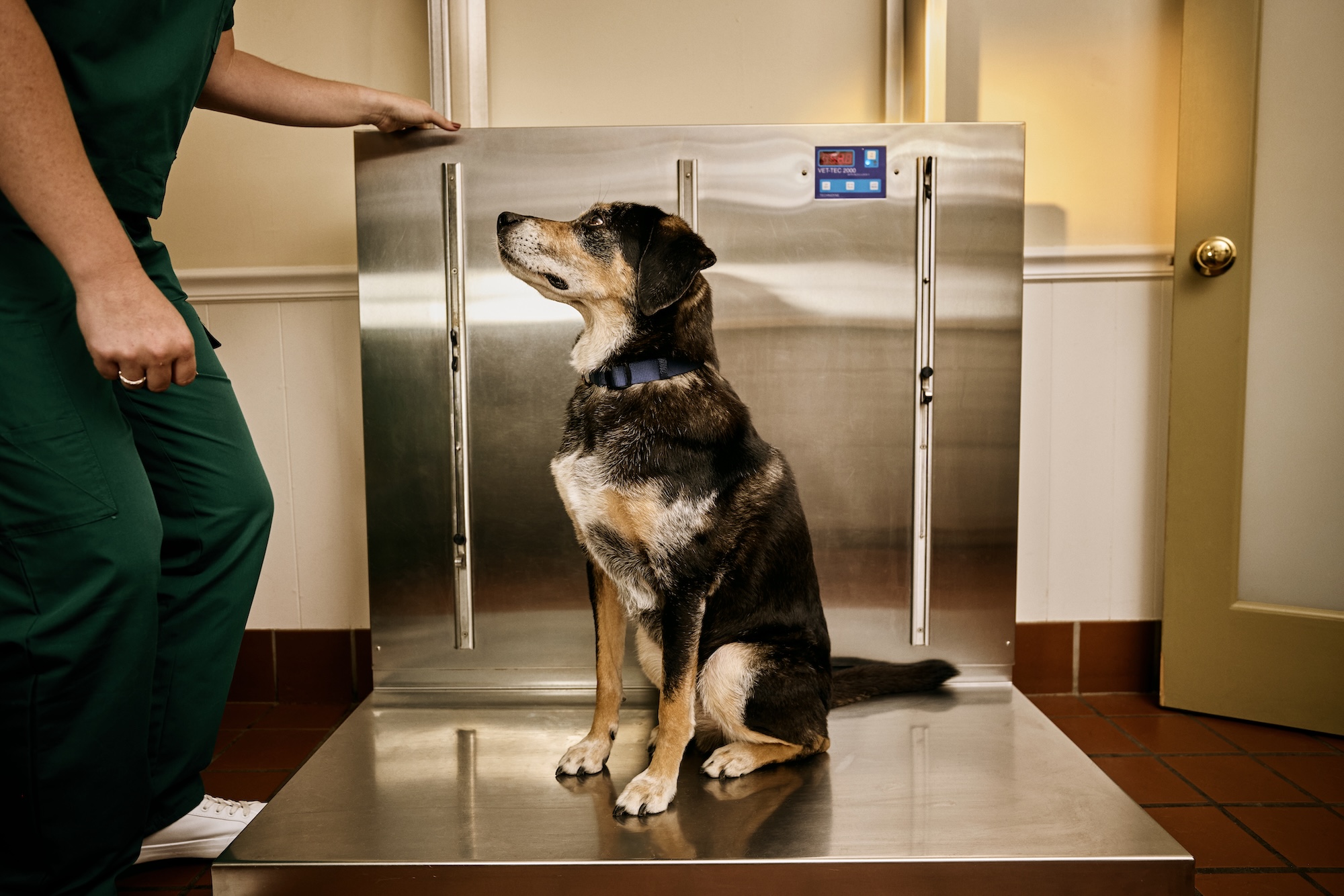Food is one of the most important decisions we make for ourselves, and for our pets. The kinds of foods we eat influence all facets of health, so, many people are paying closer attention to where their food comes from.
But even those who ARE paying attention might not know what they’re really feeding their dogs if they’re feeding kibble or canned food because of the way the pet food industry makes, regulates, and labels its dog food products.
To help cut through the confusion and catchphrases and help dog owners make informed choices, we’ve assembled some answers to key questions about pet food standards.
Is pet food regulated in the United States?
Technically, yes. But effectively, pet food is subject to little meaningful regulation.
There are two main bodies that have some say over how pet food is manufactured and labeled: the Food and Drug Administration (FDA) and the Association of American Feed Control Officials (AAFCO). But neither regulates typical pet food in the same way, or to the same standard, that our food is regulated.
The FDA states, simply, that it “regulates that can of cat food, bag of dog food, or box of dog treats or snacks in your pantry.” But there’s nothing simple about the way that those regulations are actually developed and applied.
The FDA doesn’t provide any pre-market approval for pet food products. The organization does specify some high-level animal-food standards—it’s responsible for inspections of pet food manufacturers and ingredient suppliers (excluding USDA-regulated suppliers), and investigations based on complaints from consumers. But in practice, the rules aren’t rigorously enforced. Inspections are infrequent, and even when egregious behavior is uncovered, the consequences amount to a warning and a written letter of acknowledgement.
The State Departments of Agriculture also play a role in the regulation of pet food, but, like the FDA, don’t take an active role in enforcing laws, as would happen with human food.
The FDA delegates the generation and publication of pet food rules to a body called The Association of American Feed Control Officials, or AAFCO.
What is AAFCO?
AAFCO is a private, voluntary-membership organization in North America that deals with animal-feed regulations, including those for pet food. Pet owners may be familiar with AAFCO from seeing it on their pet food’s label, next to the assurance that the food is “complete and balanced.” The guidelines for meeting this standard relate only to the nutrient profile of the product—AAFCO sets guidelines for labeling requirements, ingredient definitions and nutritional requirements, not the state or source of the ingredients that have gone into making the product.
AAFCO’s membership is made up of representatives from several North American agencies who enforce regulations (such as the state department of agriculture, FDA, and Canadian Food Inspection Agency), and while these members all have authority to regulate animal feed laws within their respective jurisdiction, AAFCO itself has no regulatory authority.
Per the AAFCO site, “AAFCO does not approve, certify or otherwise endorse pet foods. There is no AAFCO-approved pet food.”
So what ARE pet food standards?
Typical dog food is not subject to the same scrutiny, regulation, and rule-enforcement that applies to human food. Typical dry and canned pet food is subject to the same regulations as commercial animal “feed.” According to the U.S. Department of Agriculture (USDA), food has to be officially “edible” to be deemed safe for human consumption, which means it’s produced according to a set of FDA guidelines. Pet food, or feed, does not have to meet these standards, and does not have to be, officially, edible.
So what is my dog actually eating when I buy a bag or can of pet food?
“Feed” standards mean products can be made with things that would be unfit and illegal to sell for human consumption (including so-called 4D meats—diseased, disabled, dying, and dead animals.
Pet food—kibble and canned food—is typically made from parts of animals left over from the process of making human food. This can include hide, hair, bones, digestive systems, udders, beaks, and the like. But other stuff gets in there too. While diseased and other adulterated meats aren’t technically allowed in pet food, they can and do end up in kibble and canned food. How? These ingredients may be used in pet food as long as they are rendered at high heat into powdered “meals” (see sidebar below). The best example of a rendered product, and one that’s commonly found in commercial pet food, is “meal,” usually listed in the ingredients list as chicken meal or beef meal.
Because of the “feed” designation governing pet food, all manner of things that can’t go into human food can be allowed into your dog’s food.
What is rendering? In the words of the National Rendering Association (the NRA), “Rendering is a process of both physical and chemical transformation,” involving “the application of heat, the extraction of moisture, and the separation of fat.” The rendering process converts the many by-products of agriculture, and other materials noted here (like expired meats and euthanized animals), into powder meals and liquid fats. About 85% of this product is utilized as animal feed ingredients.
What is “meal?” You’ve probably seen the words chicken meal, or meat meal on a bag of dry pet food. Meal is an end product of the rendering process and a staple of kibble. As defined by AAFCO, it’s “the rendered product from mammal tissues, exclusive of any added blood, hair, hoof, horn, hide trimmings, manure, stomach and rumen contents except in such amounts as may occur unavoidably in good processing practices.” That last part, “as may occur unavoidably” is a recurring loophole through which things that are simply too hard to remove from the scraps about to be rendered may pass, and end up in the final product. Rendered protein meals are powders that go by the names meat meal, meat and bone meal, poultry meal, poultry byproduct meal and fish meal. Poultry byproduct meal includes “parts of the carcasses of slaughtered poultry such as necks, feet, undeveloped eggs and intestines.” Meat meal is so called because there’s no way to determine if the source was chicken, cow, or any number of the other animals that can end up in the render slurry.
All kibble—including the “premium,” or boutique-brand variety–is ultra-processed food, made via a high-heat process that robs food of nutritional value.
Is all of this reflected on pet food labels?
No.
On the front of a kibble bag, consumers might find images of glistening, meaty chicken breasts or marbled chunks of beef that look ready for the barbecue, rather than a depiction of the real ingredients used. But while these images may be misleading, people generally know to be skeptical of food photography. The back of the bag is another story. While food labels are typically where the truth of a product lies, they’re instead the most commonly manipulated part of pet food packaging.
The sometimes mysterious nature of ingredients has come to light via studies that show that a substantial number of dry pet-food ingredient lists are inaccurate. And because all kibble looks like dried pellets, it’s impossible for a consumer to tell by looking at the product itself whether it contains any of the meats or vegetables on the labels.
A company could legally and prominently label their product as “made with beef,” when a mere 3% of the product is a form of beef.
There are many less-than-transparent tactics like this that companies can employ to make their food sound healthier and more appetizing than it is. For example, most people would reasonably conclude that the first ingredient on a nutritional facts label is the most abundant ingredient in the food (an ingredient label is organized by the weight of the ingredient—before cooking—in descending order). But this isn’t necessarily so. Knowing that most consumers are looking for a protein source as the top ingredient in their pet’s food, companies frequently manipulate ingredient lists via “ingredient splitting,” where they list ingredients broken down into composite parts.
A product label containing 20% meat and 80% starches could either look like this:
Rice (30%), peas (30%), beef (20%), potatoes (20%)
Or this:
Beef (10%), beef heart (10%), long grain rice (10%), brown rice (10%), white rice (10%), split peas (10%), pea protein (10%), English peas (10%), potato (10%), potato starch (10%)
With the ingredients segmented down to specific parts and now equal, beef can suddenly move into the coveted first-ingredient slot.
What should a dog owner do?
Just becoming aware of these kinds of tactics, and the realities of pet food making and marketing, is an important first step. By being aware of the code, and knowing how to decipher it, you’ll be able to make informed decisions about what you’re buying and feeding your dog.
You can also choose a food that’s made to the standard of human-grade food. It’s one reliable way to assure that what you’re feeding your dog is safe and suitable for a living being to eat every day. Human-grade food is, most simply, made according to the same rigorous quality and safety standards that apply to human food.
AAFCO has set out guidelines for use of the term human-grade. The organization states that the use of “human-grade” is only acceptable in reference to a pet-food product as a whole. While each of our recipes is a blend of human-grade meat and vegetables, it’s important to note that the human-grade standard doesn’t apply only to the ingredients in the food, but also to where and how the food is made. The Farmer’s Dog food is made in facilities licensed to produce human food, alongside food made for humans.
Each step of our sourcing, cooking, packaging, and storing processes meets the same standards that govern human food. All our manufacturing locations are subject to third-party audits of food safety, good manufacturing processes (GMP), quality programs, and sanitary conditions. We have strict controls in place to prevent physical, chemical, microbial, and allergen carry-over and cross-contamination.
Read more about fresh, real food here.




